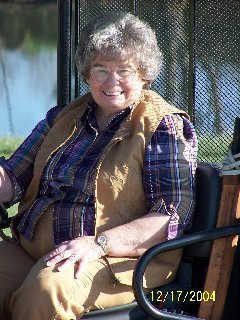A welcome phone call invited me to go with Marilyn Schild on Route 146 to retrace the Cherokee Trail of Tears from the Ohio to the Mississippi. For years, I have wanted to do this, so I was delighted. I would not even have to drive! Gerald was interested in our proposed adventure, and that made me feel important and invigorated to have such an exciting day planned for yesterday.
We met up at the Kroger parking lot promptly at nine and were off down Route 57 to Route 24 to Vienna and were on the Trail of Tears at Route 146. At Golconda, we drove by the painted mural and then up on the levee enjoying our view of the Ohio but imagining hordes of Cherokee leaving behind the sadness of Hopkinsville. There flags at graves of their revered leaders White Path and Fly Smith told them of one more loss that this forced march had cost them.
We drove up to Buell House and the Davidson cabin and looked into windows before climbing back in Marilyn’s vehicle to leave Golconda behind. We passed two different bridges over swampy creek areas with cypress growing and wondered which or if both were ones requiring corduroy roads to be built for the 1838 caravans to continue. We passed through Vienna and West Vienna and remembered some of the stories associated there. Next we saw the fragile barn on the north side of Route 146, which contains the log structure of the Bridges Tavern, recently put on the list of endangered sites by the Landmarks Preservation Council of Illinois. Pleasant Grove Church was a couple miles up the road--also on the north.
Going on to Union County, we soon saw Mt. Pleasant Road, and Marilyn headed up it. I had a briefcase along full of saved articles, documents, maps, and books--and I usually found information after we had already passed the site. However, Jon Musgrave’s photo of the house at Mt. Pleasant that had been a wayside store was in my hands. There was no doubt when we came to the columned brick home. Resisting any desire to disturb the residents, Marilyn headed up the tree-covered lane behind that probably still looked much like it did in 1838 although by the time the December detachments passed through, the road was probably a molasses of mud and the trees would have been leafless. We were grateful for her SUV that allowed us to go to the lane’s dead end and envious of the folks camping there.
Back to Route 146, we hurried to eat at the Potato Barn only to find the parking lot crammed with the luncheon crowd. Not wanting too much of a delay, we decided to eat on our way back from the end of the Trail. On around the square in Jonesboro, I imagined that the bank was still Winstead Davie’s store. On down Willard’s Ferry Landing Road, I nodded down Cook Street, where I lived as a child and where some detachments went up and over Pansy Hill and some were turned away.
We kept going to the Dutch Creek, Sand Dug Hill, Clear Creek area where thousands had been penned up unable to get across the Mississippi River. Without proper clothes, moccasins, nor blankets, here the detachments of native preachers Rev. Stephen Foreman and Rev. Jesse Bushyhead and the white assistant conductor Rev. Evan Jones met up. I tried to hear the many prayers and songs praising God that were sent Heavenward here as the Christians held their Sunday services in freezing weather and suffered illness and death.
Going onto Ware, we went on as far as the levee (again an area where I once lived). We knew Willard’s Landing used to be over there somewhere on the riverside. When we lived in the Mississippi bottoms a half century ago, people used to refer to Big Barn as though, of course, anyone knew where Big Barn used to be. Yet no one ever showed me exactly where it was or how to get there, so I was unable to show Marilyn further.
We traveled on down 146 to Reynoldsville to take the Old Cape Road home. I wanted Marilyn to see Mission Valley Church and Fair City and Ronald and Deborah Charles’ Trail of Tears dude ranch. Enjoying the same beautiful hills Gerald and I had traveled less than two weeks before and going past Lyerla Lake and the hunting lodge there that Marilyn and her late husband had traveled to on their motorcycles when her son hunted there, we journeyed on to Route 127 and back up to the Jonesboro Square.
A co-worker of Marilyn had praised a Mexican restaurant there, and we were hungry and decided to try it. The eatery we found open turned out to be a Columbian restaurant, not Mexican, and located in the dry goods side of the old Clingingsmith Store where my parents bought me school shoes as a child. In pleasant surroundings, we enjoyed a delicious meal and a gregarious host who had traveled all over the world before leaving New York City’s Fifth Avenue to move to Jonesboro.
Enjoying a day on the Trail of Tears is always shadowed by a sense of shame at man’s inhumanity to man and the strong wish that the Cherokee could have experienced it differently.
Yorktown Virginia
-
On Sunday, after our museum day, Wesley and I drove to Yorktown Va. I am
so glad we ventured out looking for a waterfront on this trip. I had to
mercha...
4 years ago











